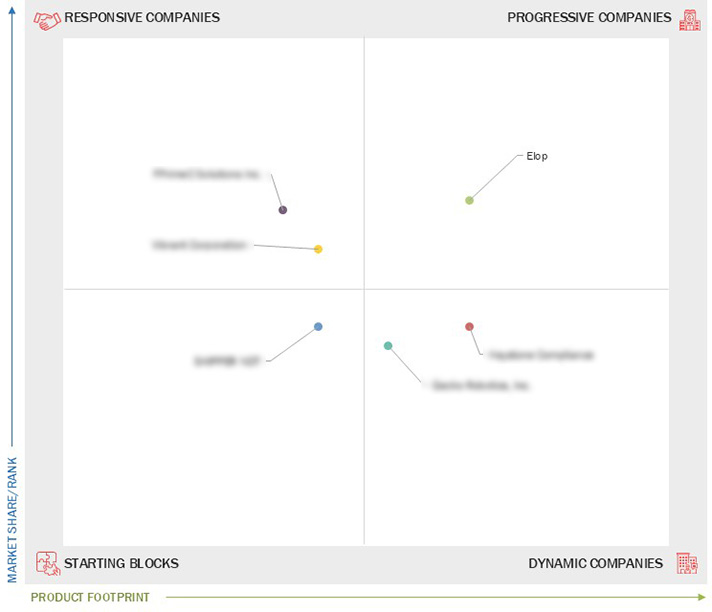Comparing 6 vendors in Management System Certification Startups across 0 criteria.
The management system certification market within the TIC industry is driven by increasingly stringent regulatory frameworks, rising consumer and stakeholder expectations for product safety, sustainability, and quality, and growing awareness around risk management and operational transparency. Technological advancements—such as AI, blockchain, IoT, and remote auditing tools—are reshaping how certifications are delivered, enabling more efficient, real-time, and traceable assessment processes.
Market Leadership Quadrant
1.1 Study Objectives
1.2 Market Definition
1.3 Study Scope
1.3.1 Markets Covered and Regional Scope
1.3.2 Inclusions and Exclusions
1.3.3 Years Considered
1.4 Currency Considered
1.5 Unit Considered
1.6 Limitations
1.7 Stakeholders
2.1 Introduction
2.2 Market Dynamics
2.2.1 Drivers
2.2.1.1 Enforcement of stringent global regulatory and compliance standards across multiple industries
2.2.1.2 Proliferation of global trade and need for harmonized standards
2.2.1.3 Growing consumer demand for quality, transparency, and ethical assurance
2.2.1.4 Increasing product complexity driven by rapid technological advancements
2.2.2 Restraints
2.2.2.1 High cost of certification and compliance
2.2.2.2 Complex and fragmented regulatory landscape
2.2.3 Opportunities
2.2.3.1 Digital transformation of certification services
2.2.3.2 Expansion of certification service providers into ESG and non-financial reporting assurance
2.2.4 Challenges
2.2.4.1 Disrupted supply chains due to geopolitical tensions
2.3 Trends/Disruptions Impacting Customer Business
2.4 Value Chain Analysis
2.5 Ecosystem Analysis
2.6 Investment and Funding Scenario
2.7 Technology Analysis
2.7.1 Key Technologies
2.7.2 Complementary Technologies
2.7.3 Adjacent Technologies
2.8 Patent Analysis
2.9 Trade Analysis
2.10 Porter’s Five Forces Analysis
2.10.1 Threat of New Entrants
2.10.2 Threat of Substitutes
2.10.3 Bargaining Power of Suppliers
2.10.4 Bargaining Power of Buyers
2.10.5 Intensity of Competitive Rivalry
3.1 Introduction
3.2 Key Player Strategies/Right to Win
3.3 Revenue Analysis
3.4 Market Share Analysis
3.5 Company Valuation and Financial Metrics
3.6 Brand/Product Comparison
3.7 Company Evaluation Matrix: Startups/SMEs
3.7.1 Progressive Companies
3.7.2 Responsive Companies
3.7.3 Dynamic Companies
3.7.4 Starting Blocks
3.7.5 Competitive Benchmarking: Startups/SMEs
3.7.5.1 Detailed list of key startups/SMEs
3.7.5.2 Competitive benchmarking of key startups/SMEs
3.8 Competitive Scenario
3.8.1 Solution/Service Launches
3.8.2 Deals
3.8.3 Expansions
3.8.4 Other Developments
4.1 Elop
4.1.1 Business overview
4.1.2 Products/Solutions/Services offered
4.1.3 Recent developments
4.2 FPrimeC Solutions Inc.
4.2.1 Business overview
4.2.2 Products/Solutions/Services offered
4.2.3 Recent developments
4.3 Gecko Robotics, Inc.
4.3.1 Business overview
4.3.2 Products/Solutions/Services offered
4.3.3 Recent developments
4.4 Keystone Compliance
4.4.1 Business overview
4.4.2 Products/Solutions/Services offered
4.4.3 Recent developments
4.5 Skipper NDT
4.5.1 Business overview
4.5.2 Products/Solutions/Services offered
4.5.3 Recent developments
4.6 Vibrant Corporation
4.6.1 Business overview
4.6.2 Products/Solutions/Services offered
4.6.3 Recent developments


 packaging-gateway
packaging-gateway
 Oct 2025
Oct 2025

